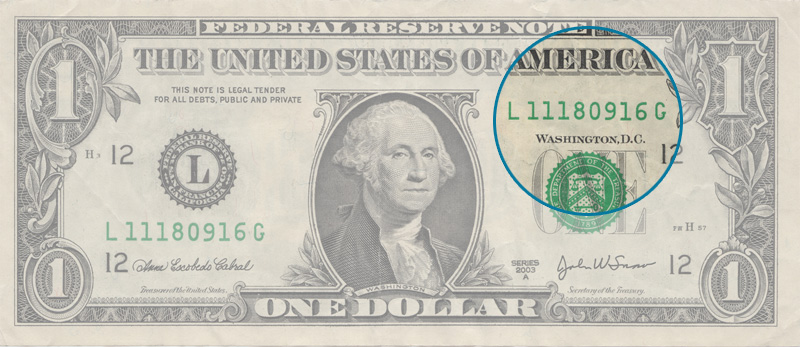Theory: What is digital watermarking?
Digital watermarking is the process by which a unique identifier is embedded within a digital signal. Images, audio, video, even multimedia works can be uniquely identified & tamper proofed for monetization and accounting of that media.
Uniquely Identifying Information & An Example Using Currency
Why is money valuable? It is a medium of exchange to make bartering unnecessary. The value of money is intrinsic to the amount of money in circulation. The more money in circulation, the less the currency is worth. We call this inflation. On the contrary, when money is not valuable we call it deflation. Therefore the value of the money is derived in part by the uniqueness of each bill. That one bill can be distinguished from another – and further, that a real bill can be distinguished from a counterfeit bill – is what enables and ensures the confidence and trust in our currency and enables value to be derived from money. With currency, this task is accomplished with a variety of anti-counterfeiting technology. But the most important, is the unique identifier: the serial number.

It is the serial number on the currency, that enables traceability and by extension uniqueness. It also enables the Government to track currency through the economy. Some say the report card of a countries economics is reflected in the value or demand for that’s countries’ currency.
Information as Currency
All media is information. Bits. A series of ones and zeros. A digital representation of an analogue signal. One of the chief benefits of the computer is it’s ability to copy information accurately and inexpensively. One of the chief benefits of the internet is the transportability of information anywhere in the world at a fraction of the cost and time of physical distribution. These two benefits of digital technology, have presented the Entertainment Industry & perhaps all industries that rely on intangible value with an unparalleled crisis: the so-called digital copy problem AKA “piracy”.
Entertainment once derived it’s value in the same way as currency. Content – intangible information – needed to be manufactured into physical product, in order to be monetized. This manufacturing burden, created scarcity. Scarcity creates greater value. By packaging content as a physical product, companies were able to create value out of an intangible asset. That value was derived by the limited number of copies. Similar to currency, the product was issued by a company, each product serialized. A barcode on the packaging, enabled the company to identify, monetize and track purchases of their content.

In the Information Age, where information can be copied and distributed globally at little cost, entertainment value can no longer by derived by the uniqueness of each physical copy – because the physical medium isn’t necessary any more. The manufacturing burden – limiting total copies and relying on bandwidth scarcity has been removed. Further the unique identifier – the serial on the packaging – had been removed, preventing companies from identifying, monetizing and tracking potential transactions.

But all is not lost. What if one could place a serial number on information? A method of labeling a piece of information with a unique identifier. That is what digital watermarking is. A method of labeling information and serializing copies. Just like currency.
